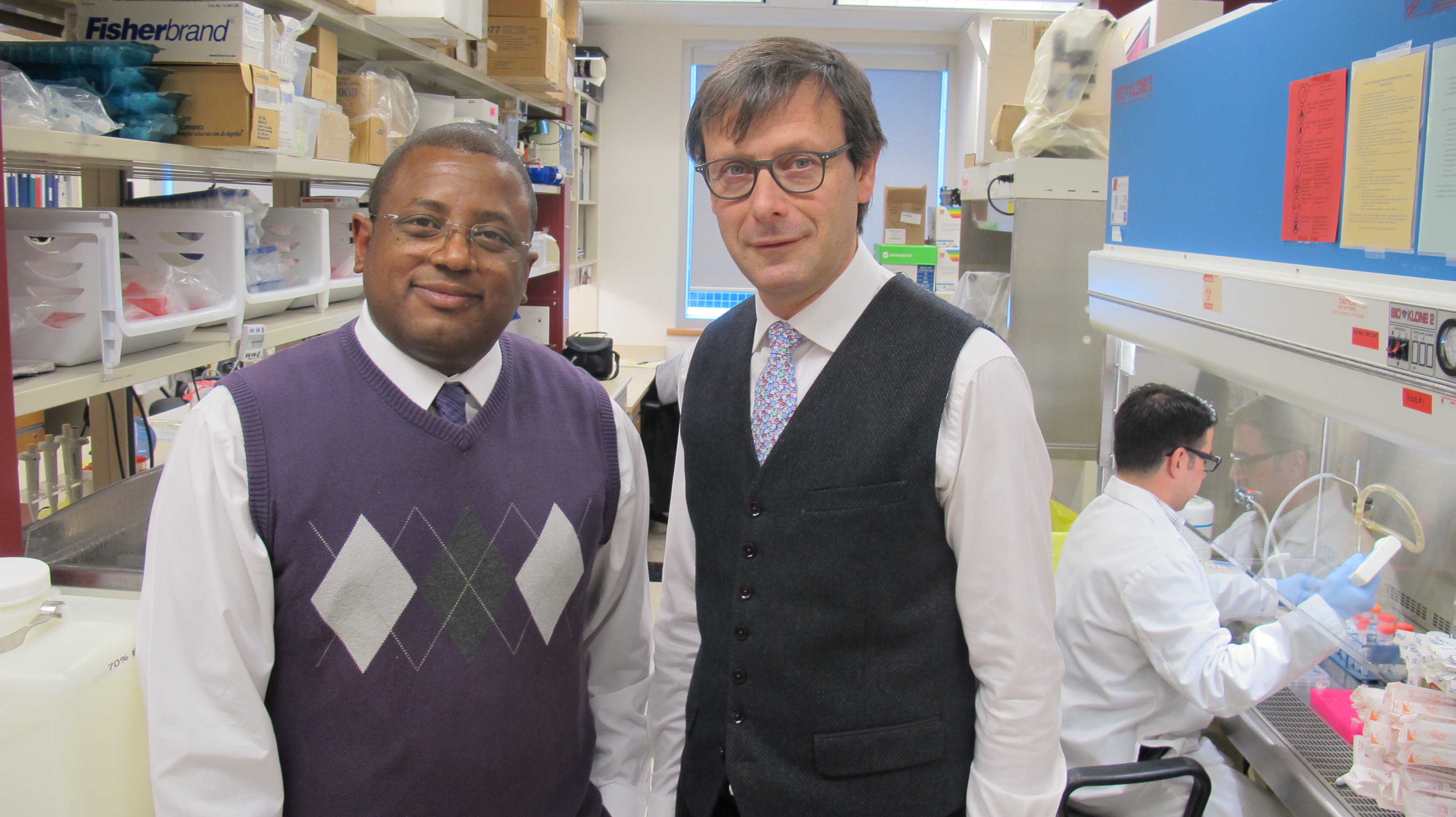
Boris Gala-Lopez and James Shapiro are co-authors of a new study published in the journal Diabetes
An antifreeze glycopeptide that mimics a naturally occurring glycoprotein found in Arctic fish is helping to significantly improve the efficacy of cell transplant treatments for diabetes patients-a procedure that transplants insulin-producing islets to render them insulin-independent for periods of time.
Anti-aging Glycopeptide (AAGP™) is the focus of a new study published in the journal Diabetes. Researchers from the University of Alberta's Faculty of Medicine & Dentistry and Alberta Diabetes Institute found that by soaking islet cells in AAGP™ for an hour and then washing it off prior to transplantation, the cells were protected from tacrolimus-an antirejection drug commonly used during transplants that is toxic to islet cells.
"Normally when we expose human islets to tacrolimus in the petri dish, they flatline and don't release insulin at all," says James Shapiro, senior author of the study and Canada Research Chair in Transplant Surgery and Regenerative Medicine at the U of A. "When we add the AAGP™ and wash it all off, the cells work perfectly normally, and are protected in a remarkably durable manner. We find we need far fewer cells to treat diabetes in our preclinical models than we would normally."
Since creating the Edmonton Protocol in 1999, Shaprio has treated more than 250 patients through islet cell transplantation. A key challenge of the procedure, though, is that most patients typically need two islet infusions, each prepared from a separate pancreas organ donor. Shapiro says there aren't enough organ donors to meet demand. Through the use AAGP™, a greater number of islet cells will survive the procedure, potentially allowing more patients to be treated.
"Just a one-hour soak in AAGP™ is enough to protect the islet cells for up to a month or two afterwards. It has a very potent and profound effect," says Shapiro. "As a direct result of these findings, we're now moving forward with plans for a first-in-human clinical trial-led at the University of Alberta-testing this drug in our human islet cell transplant program."
"This synthetic molecule seems to provide significant protection to cells exposed to multiple deleterious conditions, such as UV radiation, starvation, extreme temperatures and oxidative stress," says Boris Gala-Lopez, lead author of the study and a clinical/research fellow at the U of A's Department of Surgery. "We are certainly very excited for the multiple opportunities this finding entails to the field of transplantation research."
Funding for the study was provided by the Diabetes Research Institute Foundation of Canada. The drug AAGP™ was provided in kind by Protokinetix, a biotechnology company that assists medical researchers in enhancing cell survival and health.
"We are very excited to have our AAGP™ molecule showcased in this prestigious journal," says Clarence Smith, president and chairman of ProtoKinetix. "We are also extremely confident in the ongoing success of our collaboration with Dr. James Shapiro and his outstanding team."
Shapiro notes that if the inclusion of AAGP™ proves successful in human clinical trials, it could soon become a permanent addition to the Edmonton Protocol-representing a significant step forward in the treatment of Type 1 diabetes through islet transplantation. Though more research is needed, he also says the drug shows promise for a wide range of transplantations-potentially working to protect organs as effectively as it protects islets.